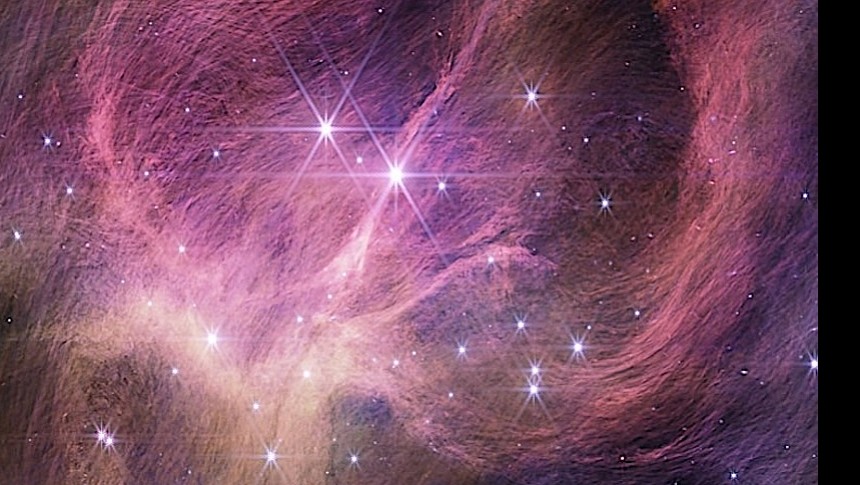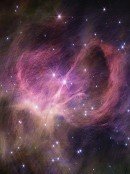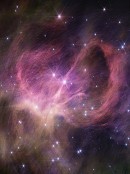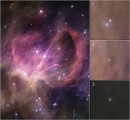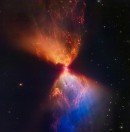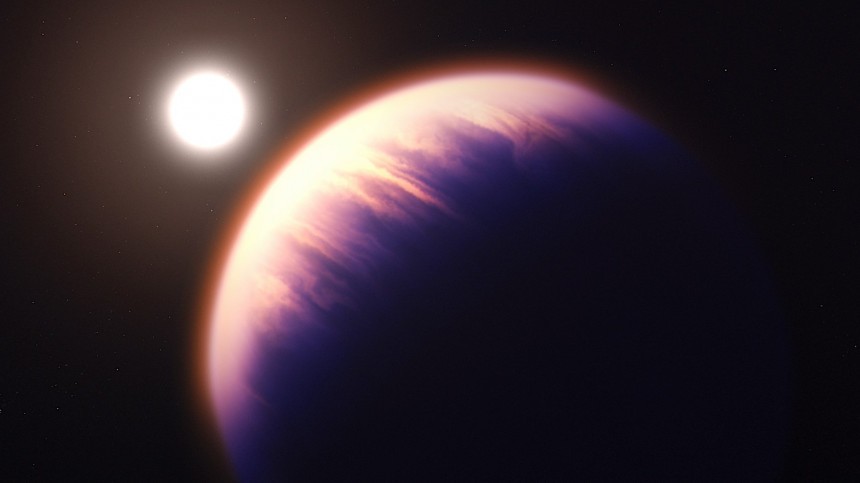It's impossible to tell for sure how many stars there are in the Universe for the simplest reason that it's impossible to see them all, let alone count them. Some estimates, based on, well, more or less guessing, put the number at 200 billion trillion. Do you find that something hard to grasp? You're not the only one.
Although there is no way of telling how many stars there are, we know the most important types. Depending on a variety of factors, including brightness, size, color, and behavior, we've named them type O, B, A, F, G, K, and M, but also red giants, white, red, and brown dwarfs, pulsars, magnetars, you name it.
Whereas there are technically few limits when it comes to how big a star can grow (the most important of all limits being mass), it's still not entirely clear how small a space object can to be to become a star.
Stars come to be like all other objects in this Universe through the collapse of matter, in this case, gas and dust. When enough density is reached, matter collapses onto itself under the power of its own gravity, and if there's enough density and heat, hydrogen fusion occurs, and the star is officially born.
There are some speculations as to how small an object needs to be (the lower limit of star formation, that is) to ignite into a star, but work is far from over in this field. Technically speaking, the smallest stars that we know to exist are the brown dwarfs.
These things are considered by astronomers as "objects that straddle the dividing line between stars and planets." They are dense enough to collapse onto themselves but many times they lack what it takes to fuse hydrogen and burn bright.
There are several kinds of brown dwarfs as well, with the ones at the bottom limit being more like giant plants than Suns, with a weight that is just a few times over that of our own favorite gas giant, Jupiter.
With the help of the James Webb Space Telescope (JWST), a team of researchers has found the smallest brown dwarf we know of to date. And it's accompanied by two others, equally as mysterious.
The trio of stars is located in the star cluster IC 348, which can be found at a distance of 1,000 light-years from Earth. They are part of a star-forming region called Perseus that is just 5 million years old - I say just because that's an infant's age compared to the rest of the Universe.
The Webb telescope was trained on this area because its onboard infrared tools are perfectly equipped to see the infrared light emitted by brown dwarfs still glowing with the heat of their birth.
One of the stars in the trio, so far unnamed, is so small it has already been classified as the new record-holder for tiny-ness – it's only up to four times the mass of Jupiter, meaning 300 times smaller than the Sun that lights up our days here on Earth.
Nobody is really sure at the time of writing if the dwarf is a small star or a very large planet, potentially thrown out of its original solar system by some cataclysmic force. It's likely though the thing is a star, for the simple reason that ejected planets are not common occurrences, but also because "most stars are low-mass stars, and giant planets are especially rare among those stars." Lastly, the young age of the cluster is a further indication this is a star people are looking at.
The astronomers of our species still don't fully understand how does "star formation process operate at such very, very small masses," and they're also having a hard time trying to properly explain how such a formation process would work.
All three brown dwarfs spotted in the Perseus region by Webb have surface temperatures ranging between 1,500 and 2,800 degrees Fahrenheit (830 and 1,500 degrees Celsius), a hell of a lot less than the 10,340 degrees Fahrenheit (5,726 Celsius) brags with.
The other two stars that accompany the tiny one have up to eight Jupiter masses, but they are remarkable through something else. Astronomers were able to detect an unidentified type of hydrocarbon containing both hydrogen and carbon atoms. It's the same kind of molecule detected by Cassini in the atmospheres of Saturn and Titan, but also in interstellar space.
Finding it on the two brown dwarfs is the first time this happened on an object situated outside our solar system. But not even that is what left researchers baffled. Because brown dwarf atmospheres are the way they are, this molecule's existence there is described as "unexpected."
Because of the nature of these space objects, the study of brown stars goes beyond getting a better understanding of how they form and evolve. New light could be shed on exoplanets that are the same size and thus share about the same properties, especially because brown dwarfs are a lot easier to spot than planets.
The study on the tiniest brown dwarf we know of so far and the mystery molecule was published in the Astronomical Journal. Work on the data acquired with Webb's help will continue, so it's likely more interesting things may come of it.
Whereas there are technically few limits when it comes to how big a star can grow (the most important of all limits being mass), it's still not entirely clear how small a space object can to be to become a star.
Stars come to be like all other objects in this Universe through the collapse of matter, in this case, gas and dust. When enough density is reached, matter collapses onto itself under the power of its own gravity, and if there's enough density and heat, hydrogen fusion occurs, and the star is officially born.
There are some speculations as to how small an object needs to be (the lower limit of star formation, that is) to ignite into a star, but work is far from over in this field. Technically speaking, the smallest stars that we know to exist are the brown dwarfs.
These things are considered by astronomers as "objects that straddle the dividing line between stars and planets." They are dense enough to collapse onto themselves but many times they lack what it takes to fuse hydrogen and burn bright.
There are several kinds of brown dwarfs as well, with the ones at the bottom limit being more like giant plants than Suns, with a weight that is just a few times over that of our own favorite gas giant, Jupiter.
The trio of stars is located in the star cluster IC 348, which can be found at a distance of 1,000 light-years from Earth. They are part of a star-forming region called Perseus that is just 5 million years old - I say just because that's an infant's age compared to the rest of the Universe.
The Webb telescope was trained on this area because its onboard infrared tools are perfectly equipped to see the infrared light emitted by brown dwarfs still glowing with the heat of their birth.
One of the stars in the trio, so far unnamed, is so small it has already been classified as the new record-holder for tiny-ness – it's only up to four times the mass of Jupiter, meaning 300 times smaller than the Sun that lights up our days here on Earth.
Nobody is really sure at the time of writing if the dwarf is a small star or a very large planet, potentially thrown out of its original solar system by some cataclysmic force. It's likely though the thing is a star, for the simple reason that ejected planets are not common occurrences, but also because "most stars are low-mass stars, and giant planets are especially rare among those stars." Lastly, the young age of the cluster is a further indication this is a star people are looking at.
The astronomers of our species still don't fully understand how does "star formation process operate at such very, very small masses," and they're also having a hard time trying to properly explain how such a formation process would work.
The other two stars that accompany the tiny one have up to eight Jupiter masses, but they are remarkable through something else. Astronomers were able to detect an unidentified type of hydrocarbon containing both hydrogen and carbon atoms. It's the same kind of molecule detected by Cassini in the atmospheres of Saturn and Titan, but also in interstellar space.
Finding it on the two brown dwarfs is the first time this happened on an object situated outside our solar system. But not even that is what left researchers baffled. Because brown dwarf atmospheres are the way they are, this molecule's existence there is described as "unexpected."
Because of the nature of these space objects, the study of brown stars goes beyond getting a better understanding of how they form and evolve. New light could be shed on exoplanets that are the same size and thus share about the same properties, especially because brown dwarfs are a lot easier to spot than planets.
The study on the tiniest brown dwarf we know of so far and the mystery molecule was published in the Astronomical Journal. Work on the data acquired with Webb's help will continue, so it's likely more interesting things may come of it.
